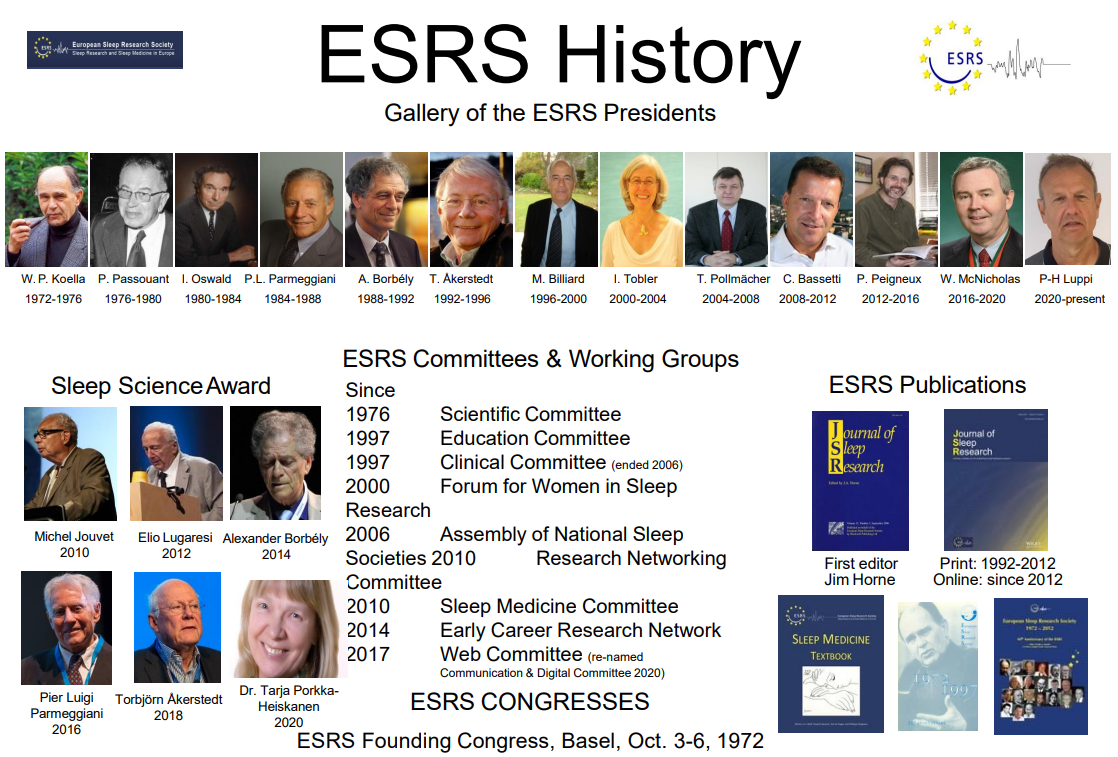Sleep Science Friday: Sleep, learning and books: how are they linked?
Sleep Science Friday
22 January 2021
It’s the end of another week — grab a coffee/tea/beer/wine and end your week with a quick recap of Sleep Science News!
The new teaching semester has just started. Remote education rapidly spread worldwide in the last year and became the norm. The ESRS is following this worldwide trend and is offering a series of online e-lessons on the physiology of sleep. Moreover, this year you’ll get the opportunity to take a Somnologist’s certification exam without leaving your house. Do not miss the date and subscribe for the exam to become a certified expert in sleep medicine! The on-line application is already open on this website.
On one hand, e-learning appears extremely attractive as it enables learning to occur anywhere and at any time. On the other hand, it requires strict self-discipline and is associated with low consistency of routine schedules, sleeping times and more frequent sleep disruption (American Academy of Sleep Medicine, 2020). Surveys show that students tend to judge remote e-exams as more stressful compared to on-campus exams (Elsalem L et al., 2020) and consider technical problems related to the e-exam platform or internet connections as stress-contributing factors.
How then can one prepare and create the best environment for learning and e-exams and reduce stress? Different techniques including remote mock E-exams are suggested to reduce the e-exam-related stress. A healthy environment and maintenance of routines and schedules are also essential. Importantly, do not forget to keep regular sleep times and avoid sleep deprivation. You can learn more about the role of sleep on learning and memory processing in the amazing e-lecture by Professor Tarja Porrka-Heiskanen (University of Helsinki, Finland). Her discoveries in the field of cellular mechanisms of sleep homeostasis are widely known. Her research has established the basal forebrain as the central regulatory area and adenosine as a key molecule in sleep homeostasis (T. Porkka-Heiskanen et al., 1997). In this e-lesson you will learn how memories are generated, which EEG-oscillations are related to memory consolidation, and how neural plasticity works.
Other tips to prepare for a successful exam are Revision, Concentration, Organization, Motivation, and a bit of Procrastination.
But… taking enough time to study and having an appropriate textbook remain key tips for achieving success. We are proud to announce that a new edition of the ESRS Textbook is planned to be published in April/May 2021. Follow our news and do not miss the publication of the new ESRS Textbook!
And, while the new textbook is coming, let’s have a closer look on how to manage the publishing process.
I f you’re a sleep specialist and have decided to publish a textbook on sleep disorders, an updated edition of a previous one, or you have been dreaming of non-medical writing and publishing, today’s Ask a Scientist is a must listen. Our guest is Professor Johan Verbraecken, Pulmonologist and Medical coordinator of Multidisciplinary Sleep Disorders Centre at Antwerp University Hospital and University of Antwerp in Belgium, and the past-president of the Belgian Association for Sleep research and Sleep medicine (BASS). Last year, Professor Verbraecken with co-editors professors Buyse, Hamburger, Van Kasteel, Van Steenwijk (the Belgian and Dutch sleep societies) published a new book, in English “Sleep and sleep disorders. A practical handbook”.
Today, Prof. Verbraecken kindly shares with us some insights into the backstage of the publishing process leading us through all the stages starting from inspiration and generating ideas, finding co-authors/co-editors, getting the material, compiling, editing, revising, re-editing towards getting a newly printed copy of a book and its promotion.
What is the biggest challenge for successful publishing? How to organize the process in the most efficient way? What to start with when you have not got enough experience? Professor Verbraecken answers these and other questions. He also tells us what distinguishes “Sleep and sleep disorders” practical guide from other handbooks on sleep disorders.
For additional reading on sleep and learning (recent publications):
1. Chatburn A, Lushington K, Kohler MJ (2021). Consolidation and generalisation across sleep depend on individual EEG factors and sleep spindle density. Neurobiol Learn Mem.
2. Reda F et al. (2021). Sleep-Related Declarative Memory Consolidation in Children and Adolescents with Developmental Dyslexia. Brain Sci.
3. Schechtman E et al. (2021). Multiple memories can be simultaneously reactivated during sleep as effectively as a single memory. Commun Biol.
4. Stee W, Peigneux P. (2020). Post-learning micro- and macro-structural neuroplasticity changes with time and sleep. Biochem Pharmacol.
5. Vergara P, Sakaguchi M (2020). Mechanisms Underlying Memory Consolidation by Adult-Born Neurons During Sleep. Front Cell Neurosci.
6. Leong RLF et al. (2020). Memory Performance Following Napping In Habitual And Non-Habitual Nappers. Sleep.
7. El-Khatib H et al. (2020). Slow wave activity moderates the association between new learning and traumatic brain injury severity. Sleep.
The latest publication from the ESRS members:
Balter LJT et al. (2021). Sickness and sleep health predict frustration and affective responses to a frustrating trigger. Sci Rep.
Benedict C et al. (2021). Sleep in Female Healthcare Workers during COVID-19: A Cross-sectional Survey Study in Sweden during the Flattening of the First Wave of the Pandemic. Ann Am Thorac Soc.
Honig E, Green A, Dagan Y (2021). Gender differences in the sleep variables contributing to excessive daytime sleepiness among patients with obstructive sleep apnea. Sleep Breath.
Juhola J et al. (2021). Internal consistency and factor structure of Jenkins Sleep Scale: cross-sectional cohort study among 80 000 adults. BMJ Open.
Xu L et al. (2021). Effect of Obstructive Sleep Apnea and Positive Airway Pressure Therapy on Cardiac Remodeling as Assessed by Cardiac Biomarker and Magnetic Resonance Imaging in Nonobese and Obese Adults. Hypertension.
The registration for the Sleep and Breathing conference has already started.Get a reduced fee for ESRS members! https://sleepandbreathing.org/
Have a great weekend everyone and sleep sound!
Yours,
Digital and Communication Committee
Just published an article? Want your research to be featured? Saw something interesting? Contact us at ESRS
Not a member yet? Apply here and see our wide range of benefits, including a yearly online subscription to the Journal of Sleep Research, automatic membership to the Federation of European Neuroscience Societies (FENS), support for early career researchers via the ECRN, regular updates via the ESRS Newsletter, promotion of your research, and more.




